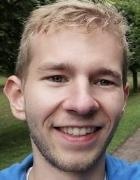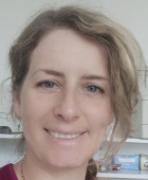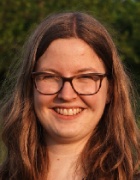Theorie biologischer Netzwerke
Prof. Karen Alim
Forschungsgebiet
Das Leben ist faszinierend. Wie entstehen Form und Struktur, wenn Organismen wachsen? Wir wollen herausfinden, welche physikalischen Prinzipien der Morphogenese von Leben zugrunde liegen. Physikalische Kräfte sind dafür verantwortlich, dass lebende Materie bei der Morphogenese geschoben und gequetscht wird. Die Beobachtung der physikalischen Kräfte, die sich aus der Zellmechanik oder den Flüssigkeitsströmungen ergeben, ist der Schlüssel zum Verständnis, wie diese physikalischen Kräfte Informationen erzeugen und transportieren - Informationen, die von der lebenden Materie ausgelesen werden und sich ihre Dynamik, aber auch auf ihre physikalischen Eigenschaften selbst verändern und so Strukturen, Organe und Organismen formen. Um dies zu erreichen, kombinieren wir die quantitative Beobachtung des Lebens mit theoretischen Modellen, um schließlich die Physik der Schlüsselprozesse in einfachen mathematischen Begriffen zu erfassen. Dabei ist es wichtig, experimentelle Modellsysteme zu wählen, die sich besonders gut für die Beobachtung und Quantifizierung eignen, aber auch eine zugängliche Abstraktionsebene für die Theorie bieten. Deshalb arbeiten wir mit dem Schleimpilz Physarum polycephalum und bauen gleichzeitig in vitro Modellsysteme im Labor auf. Theoretische Modelle, die sowohl mit Stift und Papier als auch mit Simulationen in der Gruppe entwickelt werden, inspirieren Experimente und erklären Beobachtungen. Das Leben verbirgt noch immer viele grundlegende Prozesse, die, sobald sie aufgedeckt werden, unser Design, unsere Technik oder medizinische Behandlung revolutionieren können.
Mitarbeiterinnen und Mitarbeiter der Arbeitsgruppe
Professorin
| Photo | Akad. Grad | Vorname | Nachname | Raum | Telefon | |
|---|---|---|---|---|---|---|

|
Prof. Dr. | Karen | Alim | 036 | +49 89 289-12192 |
Sekretariat
| Photo | Akad. Grad | Vorname | Nachname | Raum | Telefon | |
|---|---|---|---|---|---|---|

|
Susanne Antoinette | Tillich | 209 | +49 89 289-12358 |
Wissenschaftlerinnen und Wissenschaftler
| Photo | Akad. Grad | Vorname | Nachname | Raum | Telefon | |
|---|---|---|---|---|---|---|

|
M.Sc. | Komal | Bhattacharyya | 034 | +49 89 289-12369 | |

|
Dr. | Siyu | Chen | 038 | +49 89 289-51613 | |

|
Dr. | Agnese | Codutti | 033 | +49 89 289-12193 | |

|
M.Sc. | Joao Rafael | Diniz Ramos | 034 | +49 89 289-12369 | |

|
Dr. | Florian | Goirand | 038 | +49 89 289-51613 | |

|
M.Sc. | Mathias | Höfler | 035 | +49 89 289-14612 | |

|
Dr. | Jean-Daniel | Julien | – | – | |

|
Ph.D. | Mathieu | le Verge--Serandour | 035 | +49 89 289-14612 | |

|
Dr. | Sophie | Marbach | – | – | |

|
Dr. | Fatemeh | Mirzapour | 033 | +49 89 289-12193 | |

|
Dr. | Gabriella | Mosca | – | +49 221 5062141 | |

|
Dr. | Carsten | Rohr | – | +49 89 289-12343 | |

|
M.Sc. | Lisa | Schick | 035 | +49 89 289-14612 | |

|
M.Sc. | Nico | Schramma | – | – | |

|
M.Sc. | Chun Lung | Tong | – | – | |

|
M.Sc. | Lucas | Tröger | 038 | +49 89 289-51613 |
Studierende
| Photo | Akad. Grad | Vorname | Nachname | Raum | Telefon | |
|---|---|---|---|---|---|---|

|
Onurcan | Bektas | 033 | – | ||

|
Clara | Donat | – | – | ||

|
Fabian | Drexel | – | – | ||

|
Emily | Eichenlaub | – | – | ||

|
B.Sc. | Maximilian | Hofacker | 307 | – | |

|
Elias | Huber | – | – | ||

|
Jan | Jedryszek | – | – | ||

|
B.Sc. | Kim Paola | Job | – | – | |

|
Diana | Lenski | – | – | ||

|
Salome | Lomadze | – | – | ||

|
B.Sc. | Adrian Paul | Misselwitz | 305 | – | |

|
B.Sc. | Kaspar | Wachinger | – | – |
Andere Mitarbeiterinnen und Mitarbeiter
| Photo | Akad. Grad | Vorname | Nachname | Raum | Telefon | |
|---|---|---|---|---|---|---|

|
M.Sc. | Swarnavo | Basu | – | – | |

|
Evelyn | Packeiser | 037 | +49 89 289-51614 |
Lehrangebot der Arbeitsgruppe
Lehrveranstaltungen mit Beteiligung der Arbeitsgruppe
| Titel und Modulzuordnung | |||
|---|---|---|---|
| Art | SWS | Dozent(en) | Termine |
|
Fortgeschrittene statistische Physik eLearning-Kurs Zuordnung zu Modulen: |
|||
| VO | 4 | Alim, K. |
Di, 08:00–10:00, PH 1121 Fr, 10:00–12:00, PH 1121 |
|
Aktuelle Entwicklungen zur Physik biologischer Netzwerke Zuordnung zu Modulen: |
|||
| PS | 2 | Alim, K. |
Mi, 10:00–12:00, CPA EG.006B Mi, 10:00–12:00, CPA EG.006B sowie einzelne oder verschobene Termine |
|
Exercise to Continuum Mechanics
eLearning-Kurs Zuordnung zu Modulen: |
|||
| UE | 2 |
Burger, L.
Kienlein, M.
Mirzapour, F.
Quoika, P.
Sustay Martinez, C. … (insgesamt 6)
Leitung/Koordination: Zacharias, M. |
|
|
Übung zu Fortgeschrittene statistische Physik Zuordnung zu Modulen: |
|||
| UE | 2 |
Leitung/Koordination: Alim, K. |
|
|
Journal Club Biological Physics and Morphogenesis
Zuordnung zu Modulen: |
|||
| SE | 2 | Alim, K. |
Do, 13:00–15:00, CPA EG.006B sowie einzelne oder verschobene Termine |
|
Repetitorium zu Aktuelle Entwicklungen zur Physik biologischer Netzwerke Zuordnung zu Modulen: |
|||
| RE | 2 |
Leitung/Koordination: Alim, K. |
|
|
Tag der Physikerinnen aktuelle Informationen Zuordnung zu Modulen: |
|||
| KO | 0.1 | Alim, K. |
einzelne oder verschobene Termine |
|
Tutorenseminar zu Fortgeschrittene statistische Physik Diese Lehrveranstaltung ist keinem Modul zugeordnet. |
|||
| SE | 2 | Alim, K. | |
Abgeschlossene und laufende Abschlussarbeiten an der Arbeitsgruppe
- Autoencoders for Anomaly Detection, Phenotype Matching and Disease Prediction of Phenotypes for Indirect Calorimetry Time Series Data of Knockout Mice.
- Abschlussarbeit im Masterstudiengang Biomedical Engineering and Medical Physics
- Themensteller(in): Karen Alim
- The Influence of External Conditions on the Migration of Small Plasmodia of Physarum polycephalum
- Abschlussarbeit im Masterstudiengang Physik (Biophysik)
- Themensteller(in): Karen Alim
- Quantification of the Network Morphology of Physarum polycephalum under Environmental Effects
- Abschlussarbeit im Masterstudiengang Physik (Biophysik)
- Themensteller(in): Karen Alim
- Discovering Metastable States in Zebrafish Whole-Brain Imaging
- Abschlussarbeit im Masterstudiengang Physics (Applied and Engineering Physics)
- Themensteller(in): Karen Alim
- Remodeling of Flow Networks with Relative Resistance
- Abschlussarbeit im Bachelorstudiengang Physik
- Themensteller(in): Karen Alim